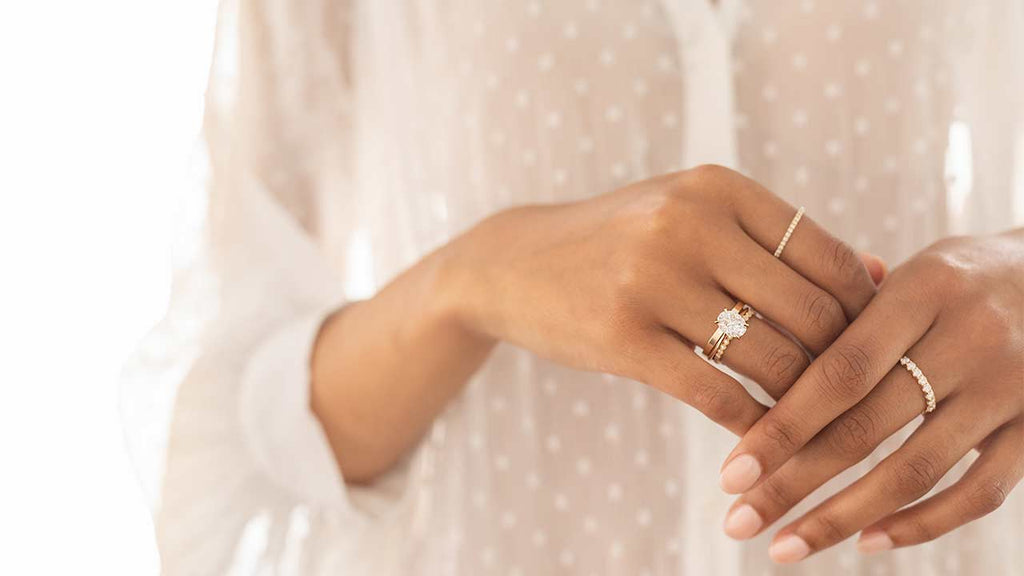When it comes to choosing the perfect metal for your lab-grown diamond ring, platinum and gold are two of the most popular options. Both metals are beautiful, durable, and have distinct qualities that make them desirable for engagement rings, wedding bands, and other fine jewelry. However, when paired with a lab-grown diamond, the decision becomes a bit more complex. Let’s dive into the key differences between platinum and gold to help you decide which is the better choice for your lab-grown diamond ring.
Table of Contents
1. Durability and Strength
Platinum is known for its exceptional durability and strength. It is a naturally dense metal, which means it’s highly resistant to wear and tear. Platinum is also hypoallergenic, making it an excellent choice for those with sensitive skin. Over time, platinum may develop a soft patina, which many people find appealing. While this doesn’t affect the metal’s integrity, it gives the ring a unique, slightly worn-in appearance.
Gold, on the other hand, is a bit softer compared to platinum, particularly in its 24k form. However, most gold used in jewelry is alloyed with other metals to increase its strength and durability. The two most common types of gold used in rings are yellow gold, white gold, and rose gold. White gold, often alloyed with platinum or palladium, is designed to mimic the appearance of platinum and provides a similar level of durability. That said, gold can still scratch more easily than platinum, and over time, a gold ring may need to be re-polished or re-plated (especially if it’s white gold) to restore its shine.
Winner: Platinum – It is stronger and more durable overall, especially for those looking for long-term wear.
2. Aesthetic Appeal
Both platinum and gold have distinct aesthetics that can complement the brilliance of a lab-grown diamond, but their looks differ considerably.
- Platinum has a naturally white sheen that complements the brilliance of diamonds beautifully. It doesn’t need rhodium plating, unlike white gold, and retains its silvery-white hue for its entire lifespan.
- Gold offers a variety of finishes that can suit different tastes. Yellow gold has a warm, classic appeal, while rose gold provides a romantic and vintage feel due to its reddish undertones. White gold is an elegant choice for a contemporary look, although it may require periodic rhodium plating to maintain its appearance.
Winner: Subjective – It depends on your personal style. If you prefer a classic and timeless look, platinum may be the right choice. If you like a variety of shades and finishes, gold offers more versatility.
3. Weight and Comfort
Platinum is significantly denser than gold, which makes it feel heavier on the finger. Some people prefer this solid, substantial feel, while others may find it a bit too heavy for their tastes. If you value comfort and lightness, you may want to consider gold, as it tends to be lighter and less cumbersome.
4. Cost
When it comes to pricing, platinum vs gold lab grown diamond rings is typically more expensive than gold. This is because platinum is rarer and denser, meaning that a platinum ring will often weigh more and cost more than a comparable gold ring. Additionally, platinum requires more intricate craftsmanship, which can increase labor costs.
On the other hand, gold is usually more affordable than platinum, especially when considering 14k or 18k options. While 24k gold is the purest form, it is less commonly used in engagement rings due to its softness. 18k gold (which contains 75% gold) is a great middle ground between purity and durability.
Winner: Gold – If budget is a concern, gold is generally the more affordable option compared to platinum.
5. Maintenance and Longevity
Both metals are long-lasting, but they require different types of maintenance.
Platinum is relatively low-maintenance. While it may develop a patina over time, this only enhances its character. To restore its shine, a simple cleaning is often all that’s needed. Platinum doesn’t require re-plating, and it holds up very well over time.
Gold, particularly white gold, requires more attention. White gold rings often need to be re-plated with rhodium every few years to maintain their bright, white shine. Yellow and rose gold do not need re-plating but may develop scratches or signs of wear. Regular polishing can help keep your gold ring looking like new.
Winner: Platinum – With minimal upkeep, platinum is easier to care for in the long run.
6. Ethical Considerations
One of the main advantages of choosing a lab diamonds is that it is a more sustainable and ethical alternative to natural diamonds. However, it’s important to consider the metal you choose for the setting as well.
Both platinum and gold can be found in eco-friendly and ethically sourced versions. Recycled platinum and gold are becoming increasingly popular, helping to reduce the environmental impact of mining. Many jewelers now offer these options, allowing you to make a more ethical choice.
Winner: Tie – Both metals can be sourced ethically, especially if you choose recycled or responsibly mined options.
7. Resale Value
Platinum tends to hold its value better than gold. Because platinum is rarer and denser, it retains a higher resale price over time. Gold, while still valuable, is more subject to fluctuations in market prices.
Winner: Platinum – It has a better resale value due to its rarity and durability.
Final Verdict: Which is Better for Your Lab-Grown Diamond Ring?
Choosing between platinum and gold for your lab-grown diamond ring ultimately depends on your personal preferences and priorities. Here’s a quick summary:
- Choose platinum if you want a durable, hypoallergenic, and low-maintenance metal that complements the brilliance of a lab-grown diamond and is willing to invest a bit more.
- Choose gold if you prefer a lighter, more affordable option that offers a variety of colors and finishes, or if you’re looking for a traditional or vintage feel.
Both metals are beautiful choices that can enhance the beauty of a lab-grown diamond, so think about what matters most to you—whether that’s durability, weight, price, or aesthetics—and choose accordingly.







